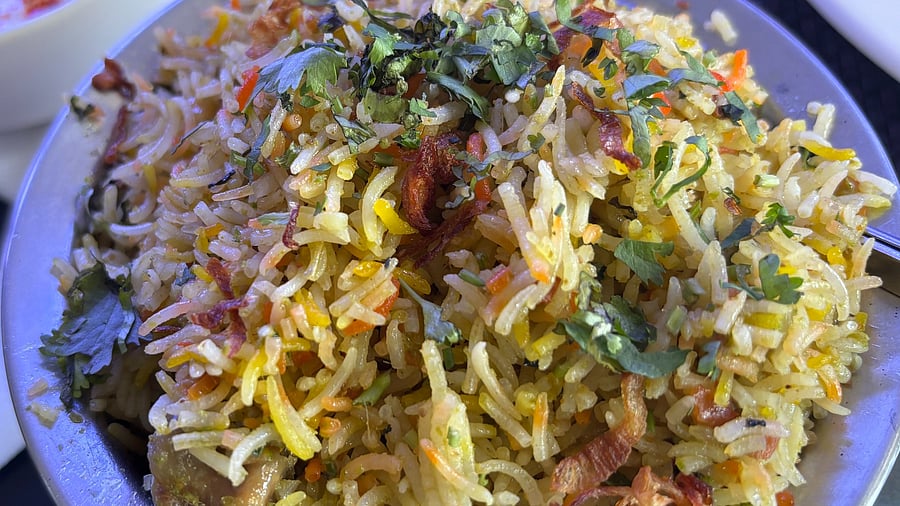
Representative image showing chicken biriyani
Credit: iStock Photo
Singapore: Curry chicken with biryani is among the five meal options prepared by a Singapore company as ready-to-eat meals during national emergencies.
Besides Biryani, the other meal options provided by SATS Ltd -- an air cargo and catering services provider, are chicken bolognese pasta, fish porridge with sweet potato and pumpkin, sweet spicy tomato fish with basmati rice, and vegetable marinara pasta.
The meals are prepared in a SATS halal-certified kitchen in Singapore, reported Channel News Asia on Saturday.
The report said these meals require no refrigeration, can be eaten at room temperature without reheating, and have a shelf life of up to eight months.
“As with any ambient product, we have to do a real-time shelf-life study … once we are assured of the quality, then we launch the commercial production,” said Jean Sin, head of innovation and product development at SATS.
About 150,000 of these meals will be distributed between Saturday (February 15) and February 28 as part of this year’s Exercise SG Ready, a component of Singapore's Total Defence campaign.
The exercise allows people in Singapore to experience simulated power outages and disruptions to food supplies, among other scenarios.
More than 100,000 students and teachers from over 90 schools, and three Institute of Technical Education colleges, along with over 8,000 seniors from 111 Active Ageing Centres, will be able to try these meals.
While long-shelf-life meals are often assumed to be unappetising, a taste test revealed otherwise.
Nutritional value is another key consideration. Sin said the meals provide essential energy and nutrients, including carbohydrates, protein, fibre and fat.
Sin said the ingredients are "selectively picked and harvested", with SATS working closely with local farmers for vegetables and mushrooms. The tilapia fish used in the meals is also locally sourced.
Once prepared, the meals undergo a sterilisation process in a retort machine, typically used commercially to eliminate harmful bacteria and pathogens in sealed food products.
Different meal types require specific sterilisation methods, with variations in temperature and duration to maintain food quality while ensuring safety.
No additives or preservatives are added to the meals, underlined Sin.
“Leak testing” is also conducted to ensure the packaging remains airtight, preventing contamination.
Sample batches are sent to Singapore Food Agency-accredited laboratories for food safety tests and only meals that pass these tests are released for consumption.
Nevertheless, the SATS team learned from its experience producing combat rations to develop the new emergency meals. One key difference is packaging transparency: combat rations are stored in opaque pouches to extend shelf life to up to 24 months, while the ready-to-eat meals have a transparent seal, which exposes them to sunlight that could discolour the food.
“When we distribute the meals, we give very clear storage conditions: a clean environment, away from sunlight, in an ambient storage area less than 30 degrees,” the Channel had Sin as saying.
The Singapore Food Agency, which collaborated with SATS in this initiative, said ready-to-eat meals are a quick way to ensure Singaporeans have access to food in crises.
"These meals are shelf-stable and are convenient as they require minimal preparation before consumption," it said in a media factsheet.